
Jan 23 2022 Beyond the Book: Bringing Words to Life with Your Grandchild
At its core, the Torah is a book of stories. The authors of the Torah must have known what any educator or child psychologist can tell you: that stories are the best way to connect with children. Reading to your grandchildren can strengthen the bond between you, help them make meaning of the world, and improve their reading skills.
![]() Click HERE to learn the benefits of reading with your grandchildren.
Click HERE to learn the benefits of reading with your grandchildren.
“The End” and closing the back cover need not mean the experience is over though. Below are seven ways you can enrich story time with your young grandchild.
You can easily adapt the activities for Zoom or Facetime or whatever video platform you use. Start by holding up the book to show the pictures on screen, share local library ebooks, or use an app such as Caribu or Zoog.
1. Act out the story
Pick a favorite storybook and turn it into a show. Invite other family members, especially siblings, to join you by choosing one character in the book that they’d like to be. Ask them to gather some costumes that will help them become that character. It can be something simple: a funny hat, simple scarf, or an old pair of glasses can be transformative!
Or you and your grandchild can play multiple roles.
Then, depending on the book’s length, select a section or the entire book to act out. Each actor should read their own role. If they’d like, they can simply sit and read from the book or they can choose to stand, dance, and use their whole bodies to show the action. For extra fun, suggest that they use silly, made-up voices to capture the essence of the character too.
You might video or voice-record the performance, share it with other family members or post it to a family album you create in https://www.bublup.com/.
2. Notice the art
One advantage that picture books have over grown-up books is their often amazing, rich artwork. As you read with your grandchild, use the illustrations as conversation starters. Stay on a page even after you’ve finished reading the text, and ask questions like: What is the character wearing? Why do you think they are wearing that? (because it’s cold; because he likes polka dots; because she is a knight and needs protection to fight the dragon)
You could also point to objects in the art and connect them to your grandchild’s own life. “I see a Hanukkah menorah in the background. Is that like the one you made? How is it the same? Different?” (both have nine holders, both have a higher spot for a shamash, this one is made of glass and mine is made of nuts and bolts)
Other questions might include: Why do you think some illustrations are in black and white and others are in color? How do you think X character is feeling? How do you know that? What do you think is silly/funny about the drawing?
 3. Go on a scavenger hunt
3. Go on a scavenger hunt
After you read a favorite book together, set a timer for five or ten minutes, and run around the house (and/or outside) gathering objects that connect to the story. For example, you might pick a baking dish if the story is about making challah or a box of tissues because the character is sad at a point in the book. Ding! When the timer goes off, share your items with one another, and take turns explaining how your chosen objects connect to the story.
4. Add your own twist to the story
Tell your grandchild that you are giving them an important job: they are now storytellers and must help you tell the story in the best way possible — even if it means changing it. As you’re reading, when you come to a dramatic moment in the story say FREEZE! and stop the story. Invite your grandchild to consider: What do you think the character should do next? What do you think they will do next? When the book ends, you can also ask them to describe how they might have ended it differently and why they think their ending is a good alternative.
5. Eat your book
Think about this: If your book were a recipe, what would it be? For example, if your book is humorous, maybe you can make a funny-face fruit plate or a silly design with cheese on a pizza. If it’s a story about Shabbat and making challah or Hanukkah and eating latkes, well, go ahead!
![]() Click HERE for more Funny Food Art ideas.
Click HERE for more Funny Food Art ideas. 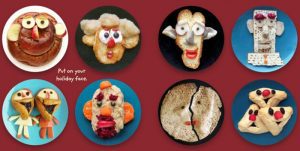
6. Make a custom bookplate
Do you and your grandchild have a favorite book you love to read over and over together? Make it even more special with a personalized bookplate. Simply take a self-adhesive shipping label — you can find them in any office supply store — and write a short, personal note to your grandchild. Be sure to include the date. You might say:
- “[Child’s name] and [Your grandparent name] Super-Favorite Book”
- “Dear [child’s name], thank you for reading this book with me so many times when you were four years old.”
- “I love the way we cuddle on the sofa when we read this story.”
- “Remember how hard we laughed when you pretended to be the caterpillar eating all that food? Love, [Your grandparent name]”
Use colorful stickers or markers to decorate the borders around your message and stick it on the inside front cover of the book. If you are at a distance and both have a copy of the book, make and send each other bookplates!
7. Code a story or game.
For older kids, after reading a chapter book together, blueprint or create an app.
From an eight-year-old: “It’s like growing a tree. Always start with your seed idea.” Think, what is the main idea of the book? That can be the basis for your quest, adventure, or game. For example, if you’ve just read a Harry Potter book together, you might plan out an app where the players are witches or wizards. Discuss, how will players create their own names? What will they wear? Will they go to potions class to learn new skills and to level up? What puzzles will you add and how will you and other players be rewarded (coins, points, gems, magic powers, longer playtime)?
You might even code a simple story or game together in Scratch Jr.
Be prepared, your grandchild will likely know way more than you and will want to take the lead!
Any of the activities above or your own or your grandchild’s creative ideas can bring books to life beyond the written word. For example, author Leslie Kimmelman suggests asking the child, “What do you think is going to happen next?” (Then turn the page.) In this way, we encourage the child’s self-expression and expand their imagination. And thus, indelible memories are made.
Ann D. Koffsky is the author and illustrator of more than thirty-five books, including Creation Colors, and the Kayla & Kugel series. She loves sharing her stories with children everywhere. Ann also creates free Jewish coloring pages for kids. Visit her website at www.annkoffsky.com to sign up to receive them in your Inbox.
Ilene Vogelstein is an early childhood educator and Vice President of the Jewish Grandparents Network.
Photographic Credits
Grandparent-grandchild by Stephanie Fink
Funny Food Art courtesy of Bill and Claire Wurtzel
All other photographs courtesy of Pexels

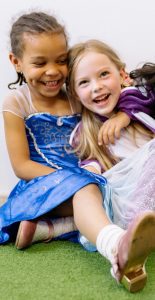
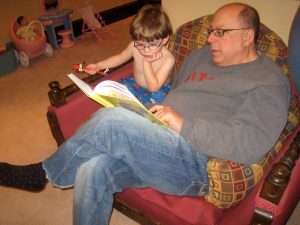
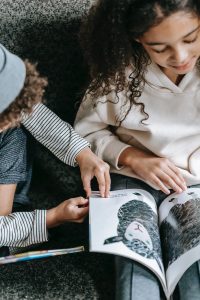 3. Go on a scavenger hunt
3. Go on a scavenger hunt


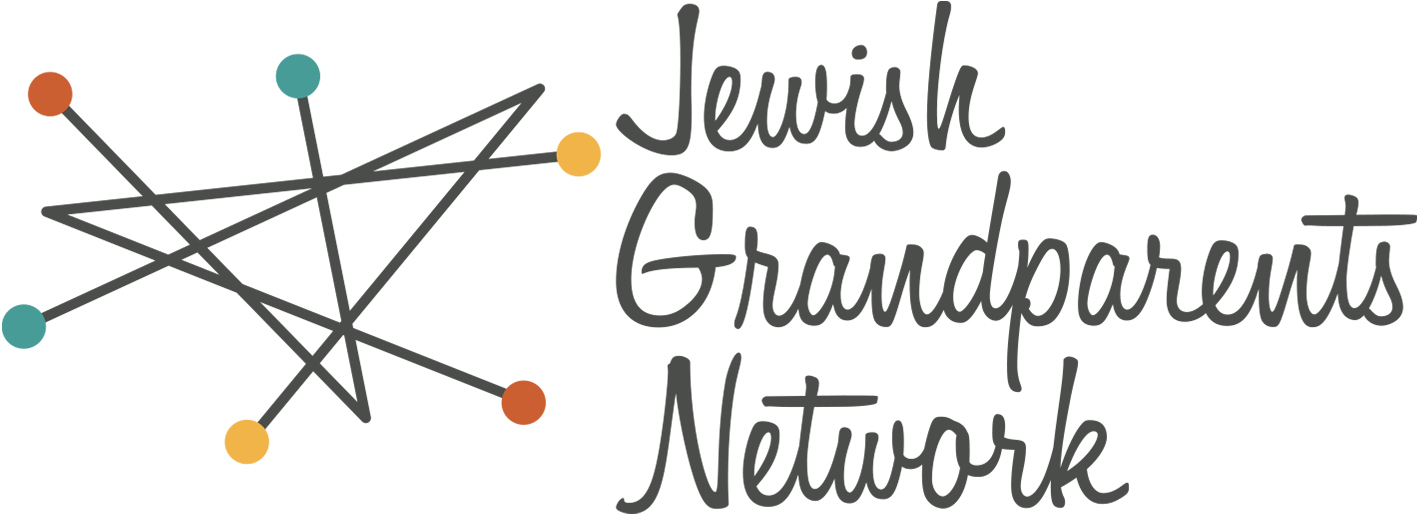
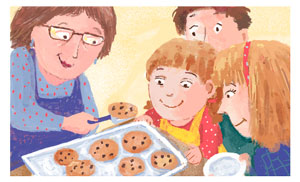 We use technologies like cookies to remember your preferences. Consenting to these technologies will provide you with a better browsing experience. JGN never shares information about your use of our website.
We use technologies like cookies to remember your preferences. Consenting to these technologies will provide you with a better browsing experience. JGN never shares information about your use of our website.